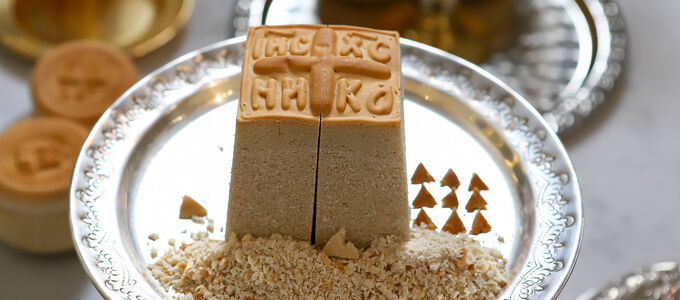
A menu in twenty courses—that’s what the nac.today series on the history and theology of Holy Communion has served up. Following is an overview of what has been covered—before we move on to Holy Sealing.
The Lord’s Supper, Holy Communion, the Eucharist—these are the most familiar designations . Yet Jesus Christ did not provide a clear term for the meal when He instituted the sacrament. Tradition cannot even agree on the exact date of His Last Supper. The Bible does not elaborate in a more precisely defined manner on the question of how the Lord’s Supper is to be celebrated. However, the meanings that the New Testament assigns to the sacrament are numerous and varied.
When the celebrations came into being
The journey away from the familiar evening meal and toward the church service was an interesting one: the development in antiquity had rather more to do with practical considerations. Things only really began to get theological in the transition to the Middle Ages, when the notion of the real presence of Jesus Christ had to be explained to a new generation of thinkers. The Reformation, in turn, brought with it new conflicts and new explanatory models.
And the various denominations also diverged with regard to practical matters, especially when it came to the elements of Holy Communion: what kind of bread is permitted? And what sort of wine? Can’t we do just as well without the chalice? And what form can both species actually take?
And the churches have even taken different paths in terms of their liturgies. This includes the manner in which the congregation gathers—in other words how, when, and where—in order to take bread and wine.
Giving and taking
Who is allowed to dispense Holy Communion? For a change, the various Christian churches actually have very similar answers to this question—albeit for different reasons. However, all denominations stipulate certain prerequisites for receiving Holy Communion. The question then arises: who is allowed to take a seat at the Lord’s table? And where?
Such distinctions make it difficult to celebrate the sacrament together, but there have always been attempts to arrive at a common denominator. Nevertheless, it is still quite a big and difficult leap over the church fence . After all, even beyond its significance as a sacrament, Holy Communion has many dimensions—namely as a meal of fellowship, of remembrance, of profession, and of hope for the future.
Even in the history of the New Apostolic Church, Holy Communion has undergone a development—in matters both small and great. This extends from the relatively sparse wording of the original consecration formula to the present status of the sacrament as the highlight of the divine service.
Photo: NAC International














